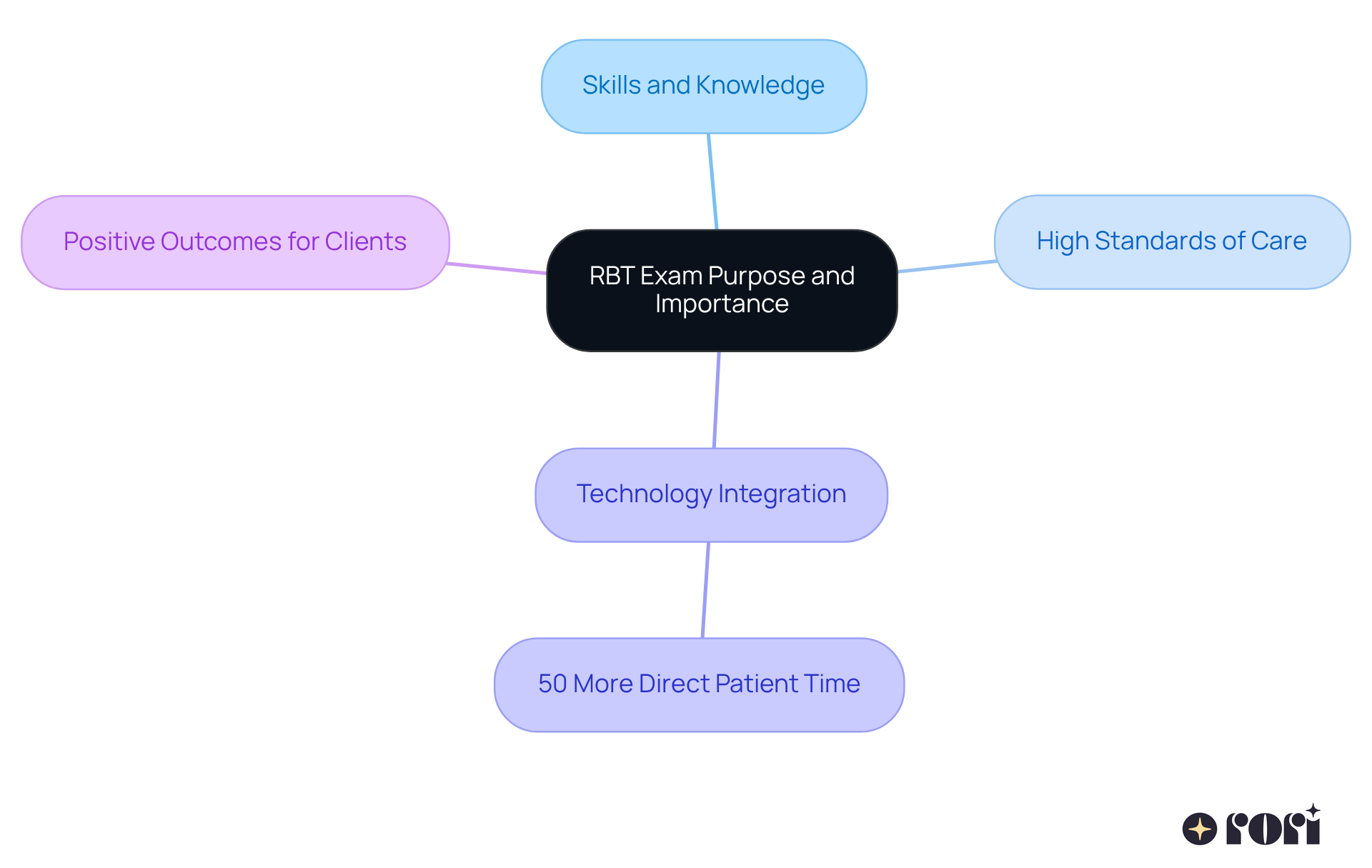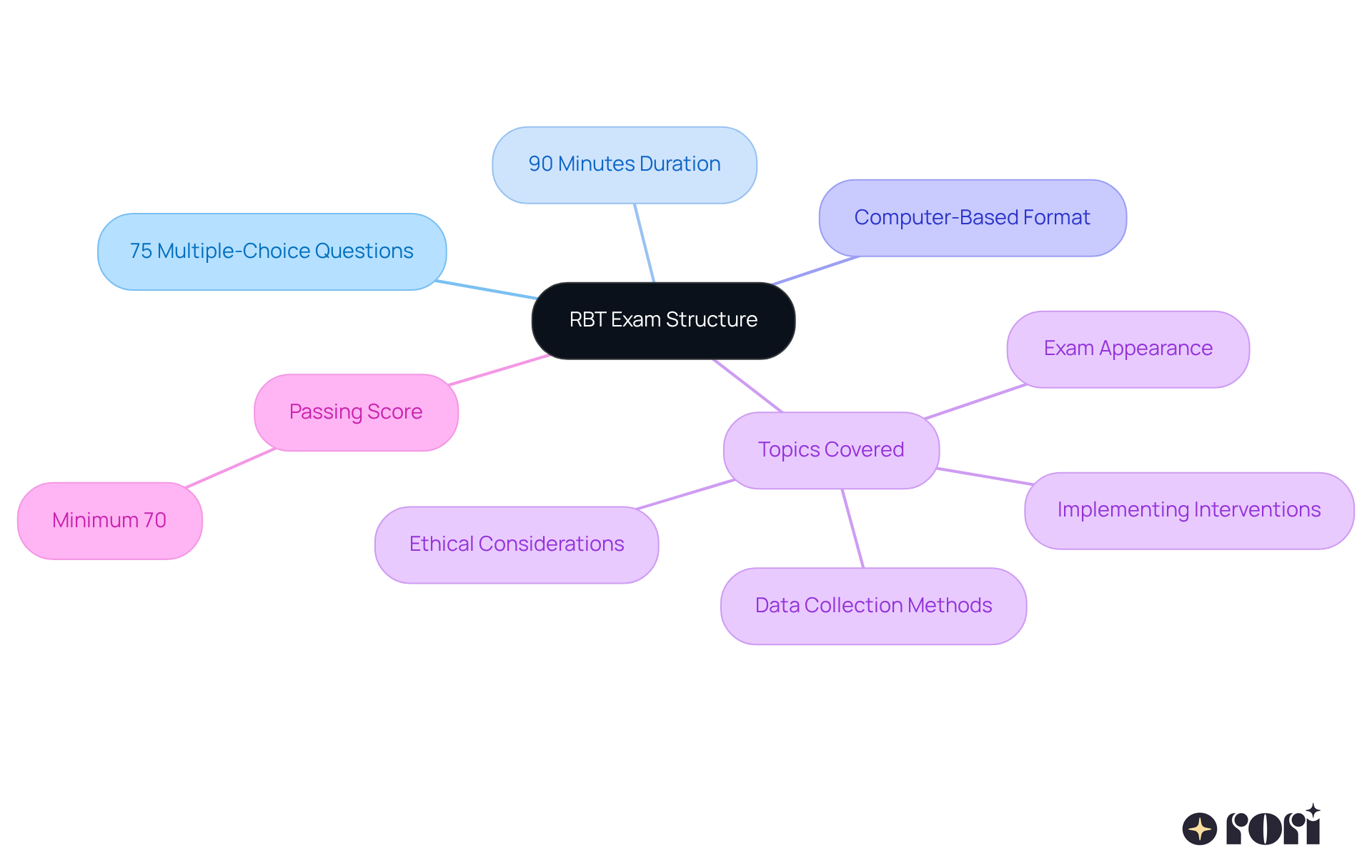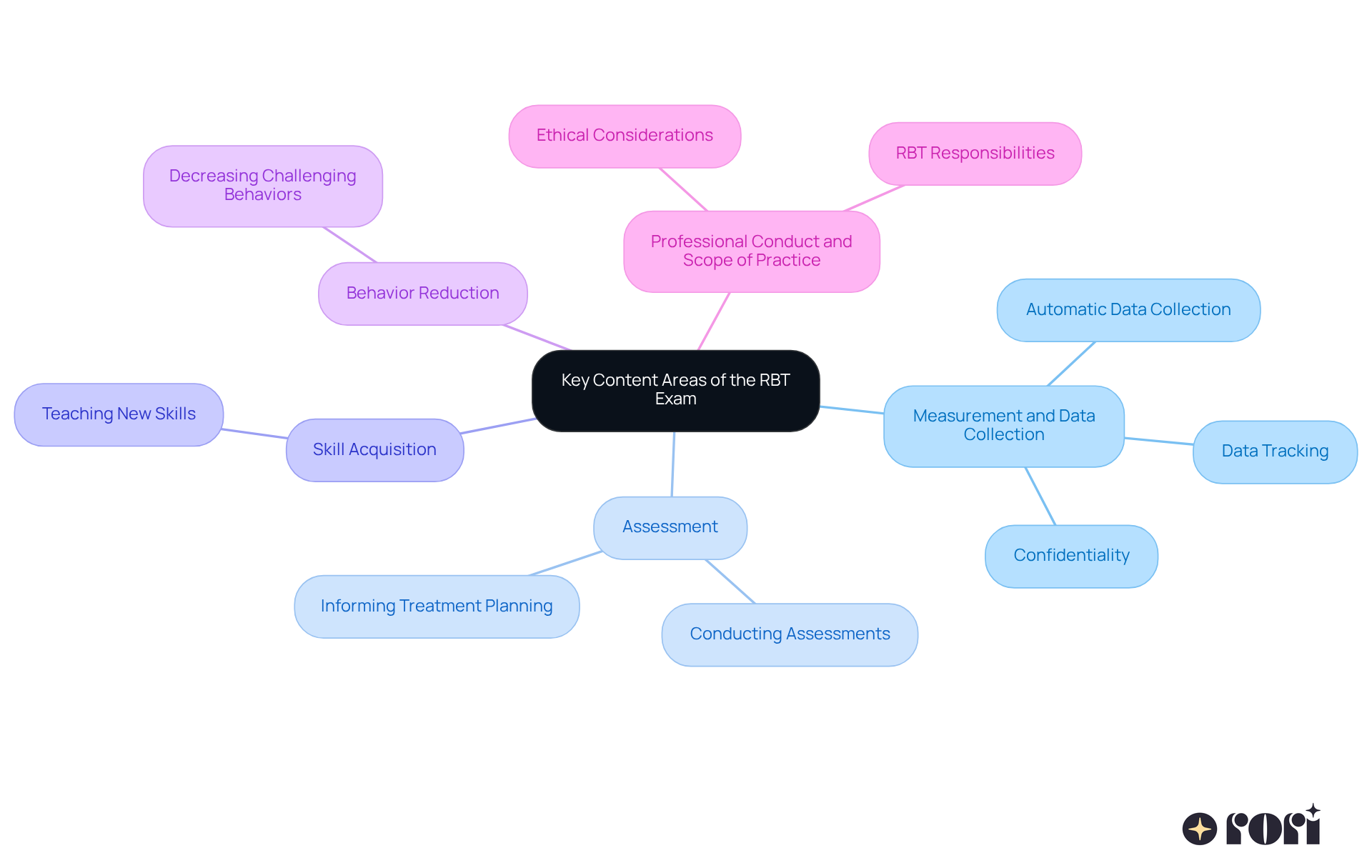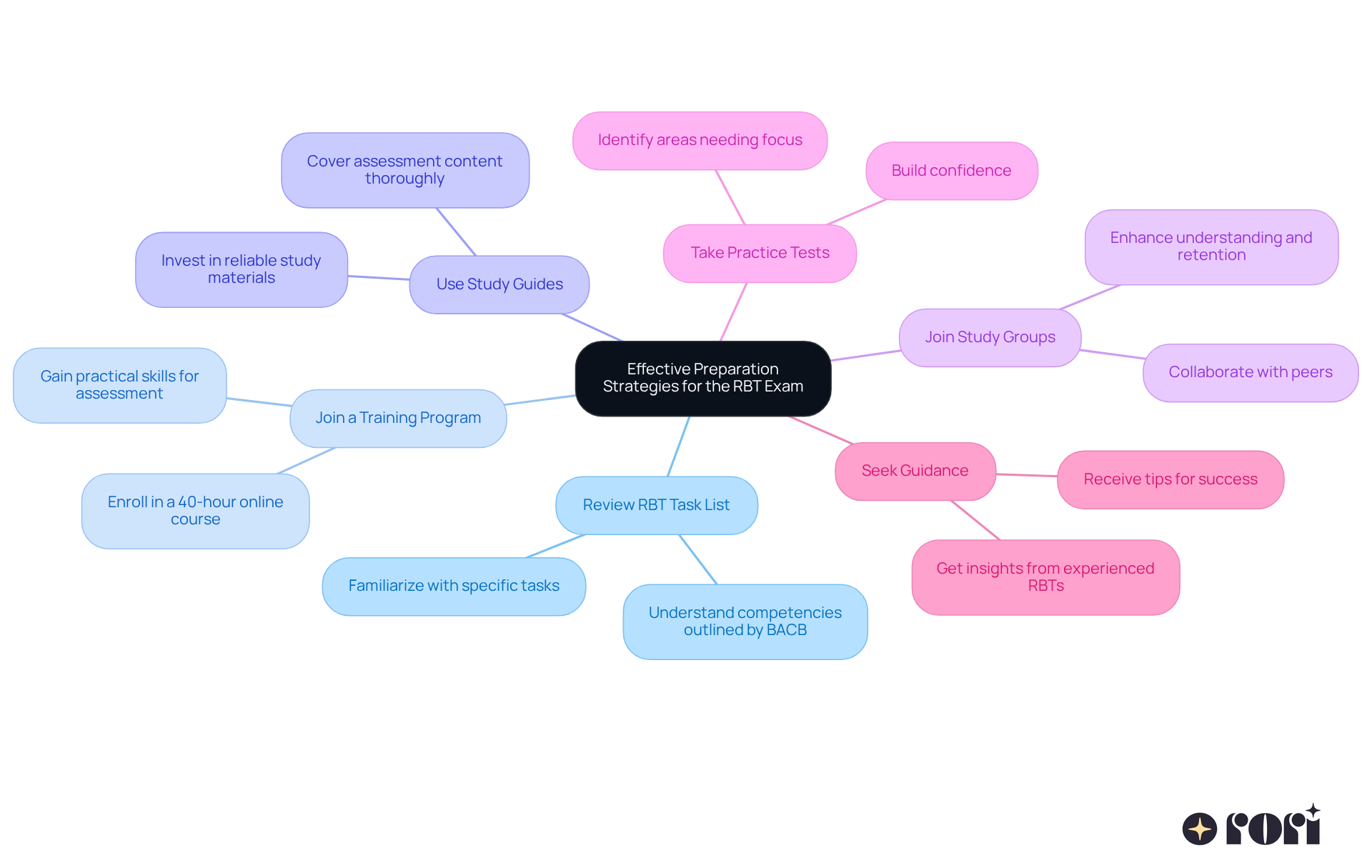The RBT exam, or Registered Behavior Technician certification, features 75 multiple-choice questions that evaluate candidates' understanding of behavior analysis principles and practices. To pass, a score of 70% is required.
It's important to grasp the exam's structure and key content areas, like:
Effective preparation strategies are essential for maintaining high standards of care in applied behavior analysis, especially for individuals with autism. Let’s explore this together and ensure we’re ready to support those who need it most!
Understanding the RBT exam is essential for parents navigating the complexities of autism care. This certification not only ensures that practitioners have the necessary skills to provide effective support but also plays a crucial role in maintaining high standards in applied behavior analysis (ABA) services.
But, with the exam's structured format and diverse content areas, what challenges might candidates face in their preparation?
Let's explore this together! By diving into these insights, we can empower families to better support their children's journey through ABA therapy.
The RBT assessment, or Registered Behavior Technician certification, is all about ensuring that those who provide direct support to clients receiving applied behavior analysis (ABA) services have the right skills and knowledge. It's crucial because it helps maintain high standards of care, ensuring that individuals with autism get the best support possible.
At Rori Care, we dream of a future where every young person can thrive, and knowing what the RBT exam looks like is essential to ensuring that ABA therapy remains top-notch. By blending established therapies with AI-driven technologies, we’re boosting therapy efficiency. This means practitioners can spend 50% more time focused on direct patient treatment instead of getting bogged down by administrative tasks.
This commitment to empowering families and individuals in autism care is vital for fostering positive outcomes in children on the autism spectrum. Let’s explore this journey together and see how we can make a difference!

To understand what does the RBT exam look like, it features 75 multiple-choice questions designed to gauge a candidate's grasp of behavior analysis principles and practices. Candidates have 90 minutes to complete this assessment, which is conveniently delivered in a computer-based format. The questions cover various topics, including:
To pass, candidates need to score at least 70%. This structured approach ensures that only those who demonstrate a solid understanding of ABA principles earn their RBT certification, ultimately enhancing the quality of care provided to youth with autism. Let’s explore this together and see how it all connects!

For those preparing to support children effectively, understanding what does the RBT exam look like is important as it covers several key content areas. Let’s break it down!
Measurement and Data Collection: This is all about understanding how to collect and analyze data to track client progress. It's crucial because effective data collection helps assess mastery of the RBT Task List. With the advancements in ABA therapy, we now have automatic data collection methods, which means clinicians can focus more on treatment rather than paperwork. Plus, this data is securely stored, anonymized, and deleted after analysis to ensure confidentiality.
Assessment: Knowing how to conduct assessments is vital for informing treatment planning.
Skill Acquisition: Here, we learn techniques for teaching new skills to clients.
Behavior Reduction: This area focuses on strategies for decreasing challenging behaviors.
Professional Conduct and Scope of Practice: Ethical considerations and the responsibilities of an RBT are key topics here.
Familiarity with these topics is essential for candidates to show their competence in providing effective ABA services. And here’s something exciting: the incorporation of AI-driven progress report automation not only boosts therapy efficiency but also frees up to 50% more time for direct treatment of children! Can you believe that 50% of ABA therapy time is often spent on report writing? This really empowers caregivers with the necessary ABA principles and strategies to support their children's behavioral goals.
Let’s explore this together! We’re here to help you every step of the way!

To effectively prepare for the RBT assessment, candidates should consider what does the RBT exam look like along with a few friendly strategies. First, take a moment to review the RBT Task List. Familiarizing yourself with the specific tasks and competencies outlined by the Behavior Analyst Certification Board (BACB) is crucial. Mastery of this list will really help you during the evaluation.
Next up, think about registering for a comprehensive training program. Joining a 40-hour online RBT training course can be a game-changer! It offers practical lessons that equip you with vital skills not just for the assessment, but for your future role as well.
Also, don’t forget to utilize study guides and resources. Investing in reliable study materials that thoroughly cover the assessment content can make a big difference. Joining study groups is another great idea! Collaborating with peers can really enhance your understanding and retention of the material.
Taking practice tests is a smart move too. They can help you identify areas where you might need a little extra focus, while also building your confidence. And remember, seeking guidance from experienced RBTs can provide valuable insights and tips that you won’t want to miss.
By implementing these strategies, candidates can definitely increase their chances of success on what does the RBT exam look like. Let’s explore this together and get you ready for that certification!

Understanding the RBT exam is so important for parents who want to ensure their children get the best support through applied behavior analysis (ABA). This certification shows that practitioners have the skills and knowledge needed, and it helps maintain high standards of care for individuals with autism.
The RBT exam has a structured format, featuring 75 multiple-choice questions that cover key topics like:
To prepare, parents can:
These strategies can really boost candidates' chances of success! Together, they highlight just how vital the RBT certification is for delivering effective and compassionate care.
But the importance of the RBT exam goes beyond just individual certification; it shapes the larger landscape of autism care. By focusing on well-prepared practitioners, families can create a supportive environment that encourages positive outcomes for their children. Engaging with these insights empowers parents to take an active role in their children's care, ensuring they receive the best support possible. Let’s explore this together and make a difference for our kids!
What is the purpose of the RBT exam?
The purpose of the RBT exam, or Registered Behavior Technician certification, is to ensure that individuals providing direct support to clients receiving applied behavior analysis (ABA) services possess the necessary skills and knowledge.
Why is the RBT exam important?
The RBT exam is important because it helps maintain high standards of care, ensuring that individuals with autism receive the best support possible.
How does Rori Care approach the RBT exam and ABA therapy?
Rori Care aims to enhance ABA therapy by combining established therapies with AI-driven technologies, which increases therapy efficiency and allows practitioners to focus more on direct patient treatment.
What impact does the RBT exam have on autism care?
The RBT exam plays a vital role in empowering families and individuals in autism care, fostering positive outcomes for children on the autism spectrum.